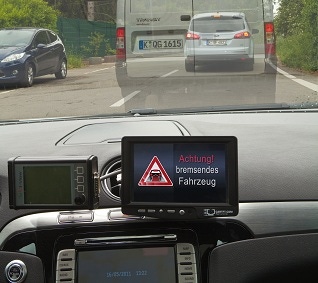Automotive firm Ford’s executive chairman Bill Ford outlined a plan for connected cars to help avoid a potential future of crippling congestion at Mobile World Congress this week. Ford told delegates at the show that the number of cars on the world’s roads is forecast to grow from one billion now to up to four billion by 2050. And he proposed that one way of avoiding the potentially global problem of overcrowded roads is to create a global transportation network that utilises communication between vehicles, transport infrastructure and individual mobile devices.
March 2, 2012

Automotive firm Ford’s executive chairman Bill Ford outlined a plan for connected cars to help avoid a potential future of crippling congestion, at Mobile World Congress this week.
He told delegates at the show that the number of cars on the world’s roads is forecast to grow from one billion now to up to four billion by 2050. And he proposed that one way of avoiding the potentially global problem of overcrowded roads is to create a global transportation network that utilises communication between vehicles, transport infrastructure and individual mobile devices.
“If we do nothing, we face the prospect of ‘global gridlock’, a never-ending traffic jam that wastes time, energy and resources and even compromises the flow of commerce and healthcare,” said Ford.
He added that the cooperation needed between the automotive and telecommunications industries will need to improve – firms will need to develop new technologies, and establish new relationships.
“No one company or industry will be able to solve the mobility issue alone and the speed at which solutions take hold will be determined largely by customer acceptance of new technologies. The telecommunications industry is critical in the creation of an inter-connected transportation system where cars are intelligent and can talk to one another as well as the infrastructure around them. Now is the time for us all to be looking at vehicles on the road the same way we look at smartphones, laptops and tablets; as pieces of a much bigger, richer network.”
Ford also outlined the company’s “Blueprint for Mobility”, which seeks solutions to tackle traffic congestion problems and defines the start of Ford’s thinking on what transportation will look like in 2025 and beyond.
In the near-term, within five to seven years, Ford will be working on developing increasingly intuitive in-car mobile communications options and driver interfaces that proactively alerts drivers to traffic jams and accidents. It is also working on developmental projects such as vehicle-to-vehicle warning systems.
The mid-term will see the introduction of semi-autonomous driving technology including driver-initiated “auto pilot” capabilities and vehicle platooning in limited situations – technologies that will provide improved safety and driver assistance features, but allow the driver to take control, if needed.
And in the long term, the company sees a radically different transportation landscape where pedestrian, bicycle, private car, commercial and public transportation traffic will be woven into a single connected network to save time, conserve resources, lower emissions and improve safety.
The automotive sector is clearly more important in operators’ M2M strategies than it has been for the last few years, according to Jeremy Green, principal analyst at Ovum,
“As well as launching a “Blueprint for Mobility” and a new model car, Ford said some surprisingly sensible things, including the suggestion that connected cars should be about making journeys more efficient by providing alternative transportation options if congestion is unavoidable. In the future pedestrian, bicycle, private car and commercial and public transportation traffic will be “woven together into a single mobile network to save time, conserve resources, lower emissions and improve safety”.
Meanwhile, Ericsson took advantage of MWC to publicise its own project with Volvo, Göteborg Energi, and the Viktoria Institute, which enables an altogether smarter paradigm for the charging of electric cars.
“The system uses M2M connectivity to enable the cars’ charging profile to be controlled by the owner even when they are plugged into an ordinary dumb power point, said Green. “This means that, as with a smart grid point, they charge their batteries when electricity is cheapest – with a clear payoff in terms of sustainability, since this ought to ensure that the load on the grid is spread more evenly.”
About the Author(s)
You May Also Like







.png?width=300&auto=webp&quality=80&disable=upscale)

.png?width=300&auto=webp&quality=80&disable=upscale)
_1.jpg?width=300&auto=webp&quality=80&disable=upscale)



.png?width=800&auto=webp&quality=80&disable=upscale)